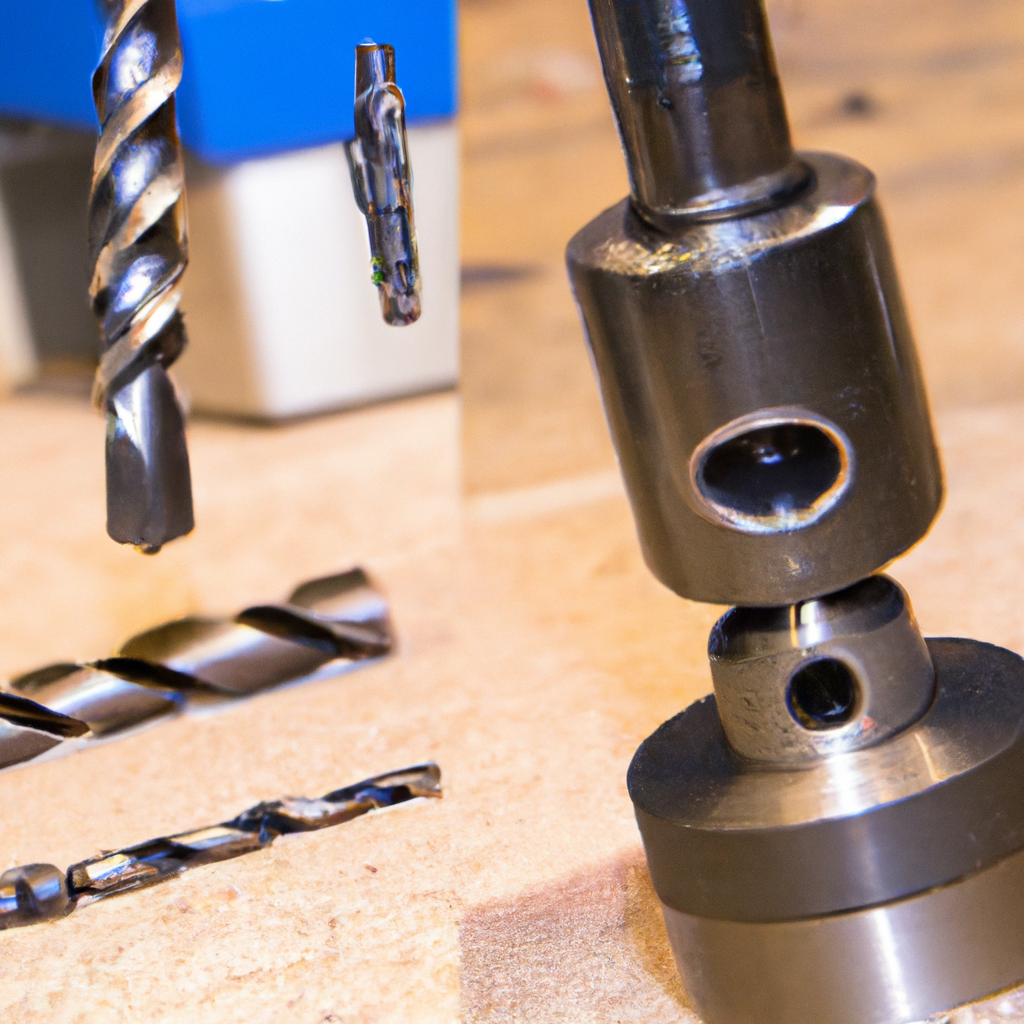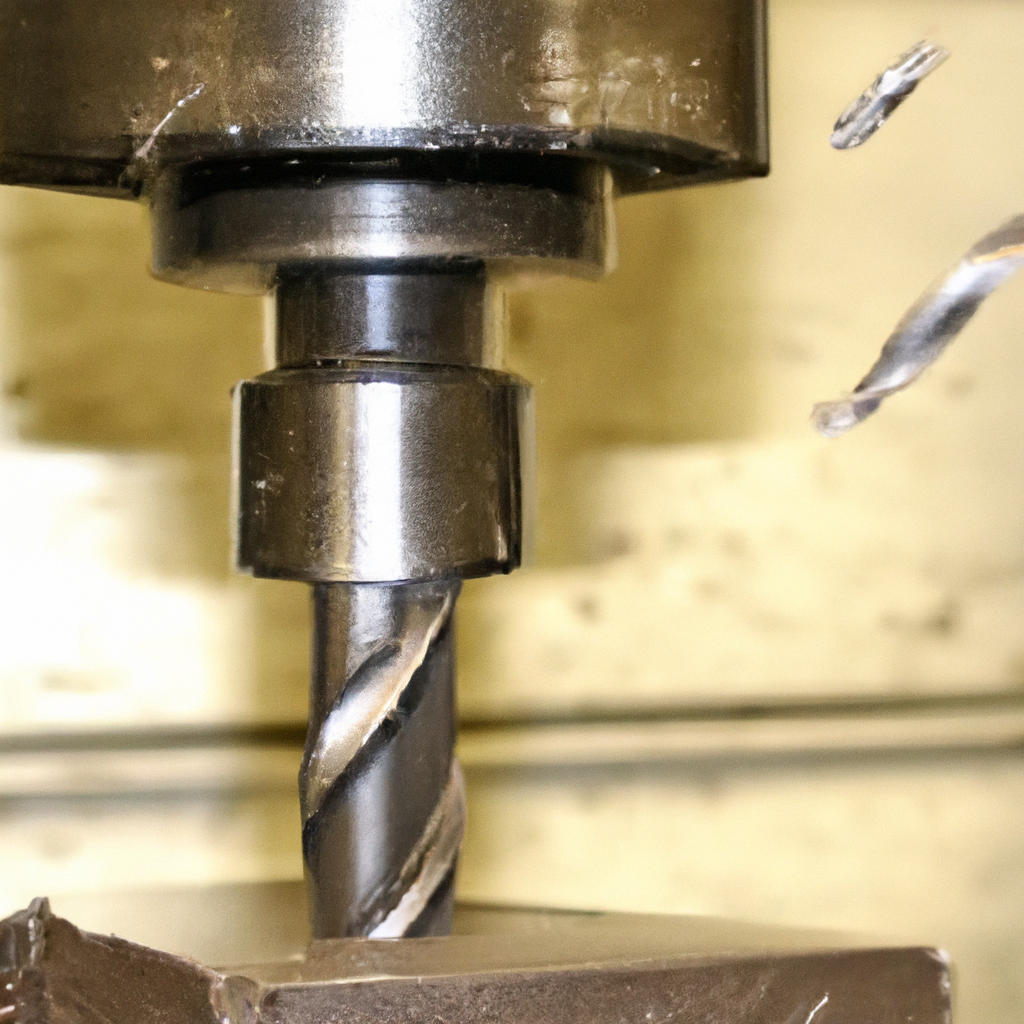In this article, you’ll discover a simple and step-by-step guide on how to take the chuck off a drill press. Whether you’re a seasoned handyman or a DIY enthusiast, knowing how to remove the chuck from your drill press can come in handy when you need to change bits or perform maintenance. With clear instructions and a friendly tone, you’ll be equipped with the knowledge and confidence to tackle this task with ease. So let’s get started and unlock the secrets to removing the chuck from your drill press.

Preparation
Before we can begin the process of removing the chuck from your drill press, it’s important to gather the necessary tools. You’ll need a few items to make this task easier and more efficient. First and foremost, ensure you have a drill press chuck removal tool. This special tool is specifically designed to remove chucks from drill presses. Additionally, you’ll need a mallet to tap the chuck, penetrating oil to loosen any rust or debris, and a screwdriver to remove the chuck retaining screw.
Safety should always be a priority when working with power tools. Before attempting to remove the chuck, make sure you have taken the necessary safety precautions. This includes wearing proper personal protective equipment such as safety goggles, gloves, and ear protection. It’s also important to have a clear workspace, free from clutter and distractions. Lastly, make sure the drill press is unplugged from the power source before starting the chuck removal process.
Removing the Chuck
Now that you have all the necessary tools and have taken the safety precautions, it’s time to start the process of removing the chuck from your drill press.
-
Begin by unplugging the drill press from the power source. Safety should always come first, so it’s important to ensure the drill press is not powered on during this process.
-
Open the chuck jaws as wide as possible. This will make it easier to access the chuck and provide more space for removing it.
-
Use a chuck key or a wrench to secure the chuck. This will prevent it from rotating while you’re trying to remove it.
-
In some drill presses, you might find a chuck retaining screw that needs to be removed before the chuck can be taken off. Unscrew this retaining screw using a screwdriver in a counterclockwise direction.
-
With the chuck retaining screw removed, you can now tap the chuck with a mallet. Lightly tap the chuck from different angles to help loosen it. This step is particularly useful if the chuck is stuck due to rust or debris.
-
If tapping the chuck doesn’t work, you can use a chuck removal tool. Insert the removal tool into the chuck jaws and turn it counterclockwise to loosen the chuck. This tool provides additional leverage and makes the removal process easier.
-
If the chuck is still stubborn and won’t come off, try applying some penetrating oil. Apply the oil around the chuck, focusing on the areas where it meets the spindle. Let the oil sit for a few minutes to penetrate any rust or debris. This should make removing the chuck easier.

Alternative Methods
While the above steps should work in most cases, there are alternative methods you can try if you’re still having trouble removing the chuck.
Using a pipe wrench
If you don’t have a chuck removal tool on hand, you can try using a pipe wrench. Simply clamp the pipe wrench onto the chuck and rotate it counterclockwise to loosen and remove the chuck. Be cautious when using this method, as the pipe wrench may damage the chuck if not handled carefully.
Freezing the chuck
Another method worth trying is freezing the chuck. Place the drill press chuck in a plastic bag and seal it tightly. Then, place the bag with the chuck in the freezer for a few hours. The extreme cold temperature can cause the metal to contract, making the chuck easier to remove. After freezing, follow the previous steps to remove the chuck.
Using heat to loosen the chuck
Alternatively, you can use heat to loosen the chuck. Apply heat to the chuck using a heat gun or a hairdryer. The heat will cause the metal to expand, which can help break any rust or debris bonds. After applying heat, use the previously mentioned steps to remove the chuck.
Cleaning and Maintaining the Chuck
Once the chuck has successfully been removed, it’s essential to clean and maintain it properly. A well-maintained chuck will ensure optimum performance and longevity of your drill press.
Begin by cleaning the chuck thoroughly. Use a mild detergent and warm water to remove any dirt, dust, or debris. Pay attention to the chuck jaws and make sure they are clean and free from any obstructions.
After cleaning, inspect the chuck for any signs of damage. Look for cracks, chips, or excessive wear. If you notice any damage, it’s best to replace the chuck to prevent any safety hazards.
To keep the chuck functioning smoothly, it’s important to lubricate it regularly. Apply a small amount of lubricating oil or grease to the chuck jaws and the area where the chuck meets the spindle. This will help reduce friction and ensure smooth operation.
Reinstalling the Chuck
After cleaning and maintaining the chuck, it’s time to reinstall it back onto the drill press.
-
Start by aligning the chuck with the spindle. Insert the chuck onto the spindle and ensure it is seated properly.
-
Once the chuck is in place, tighten the chuck retaining screw using a screwdriver in a clockwise direction. Make sure it is tightened securely, but be careful not to over-tighten and risk damaging the chuck or the spindle.
-
Finally, close the chuck jaws by turning the chuck key or wrench in a clockwise direction. Ensure the jaws are closed evenly and securely.
-
Plug in the drill press and you’re ready to go. Remember to always test the chuck operation before starting any drilling tasks to ensure it is properly installed and functioning correctly.
Troubleshooting
While removing and reinstalling a chuck should be a relatively straightforward process, there are a few common issues you may encounter. Here are some troubleshooting tips for these situations:
Stuck chuck
If the chuck is stuck and won’t come off, try tapping it with a mallet from different angles to loosen it. Additionally, applying penetrating oil and letting it sit for a few minutes can further aid in loosening the chuck. If the chuck remains stuck, it may be necessary to seek professional assistance to prevent any damage to the drill press.
Damaged chuck
If you notice any cracks, chips, or excessive wear on the chuck, it’s crucial to replace it. A damaged chuck can pose a safety risk and may affect the performance of your drill press.
Chuck spinning during drilling
If you find that the chuck is spinning during drilling, it means the chuck jaws are not securely holding the drill bit. Double-check that the chuck jaws are closed tightly around the drill bit. If the issue persists, it may be necessary to replace the chuck or seek professional help.
Tips and Warnings
Here are some additional tips and warnings to keep in mind when removing, cleaning, and reinstalling the chuck on your drill press:
-
Always wear proper personal protective equipment, including safety goggles, gloves, and ear protection, when working with power tools.
-
Consult the drill press manual for specific instructions and recommendations for your particular model. Different drill presses may have unique features or requirements.
-
If you’re not confident or comfortable with removing the chuck yourself, it’s always a good idea to seek professional assistance. This will ensure the task is done correctly and reduce the risk of damage or injury.
Conclusion
Removing, cleaning, and reinstalling the chuck on your drill press may seem like a daunting task, but with the right tools, knowledge, and safety precautions, it can be easily accomplished. By following the steps outlined in this guide, you can ensure your drill press chuck is properly maintained and in optimal working condition. Remember to prioritize safety at all times and don’t hesitate to seek professional help if needed. Happy drilling!

